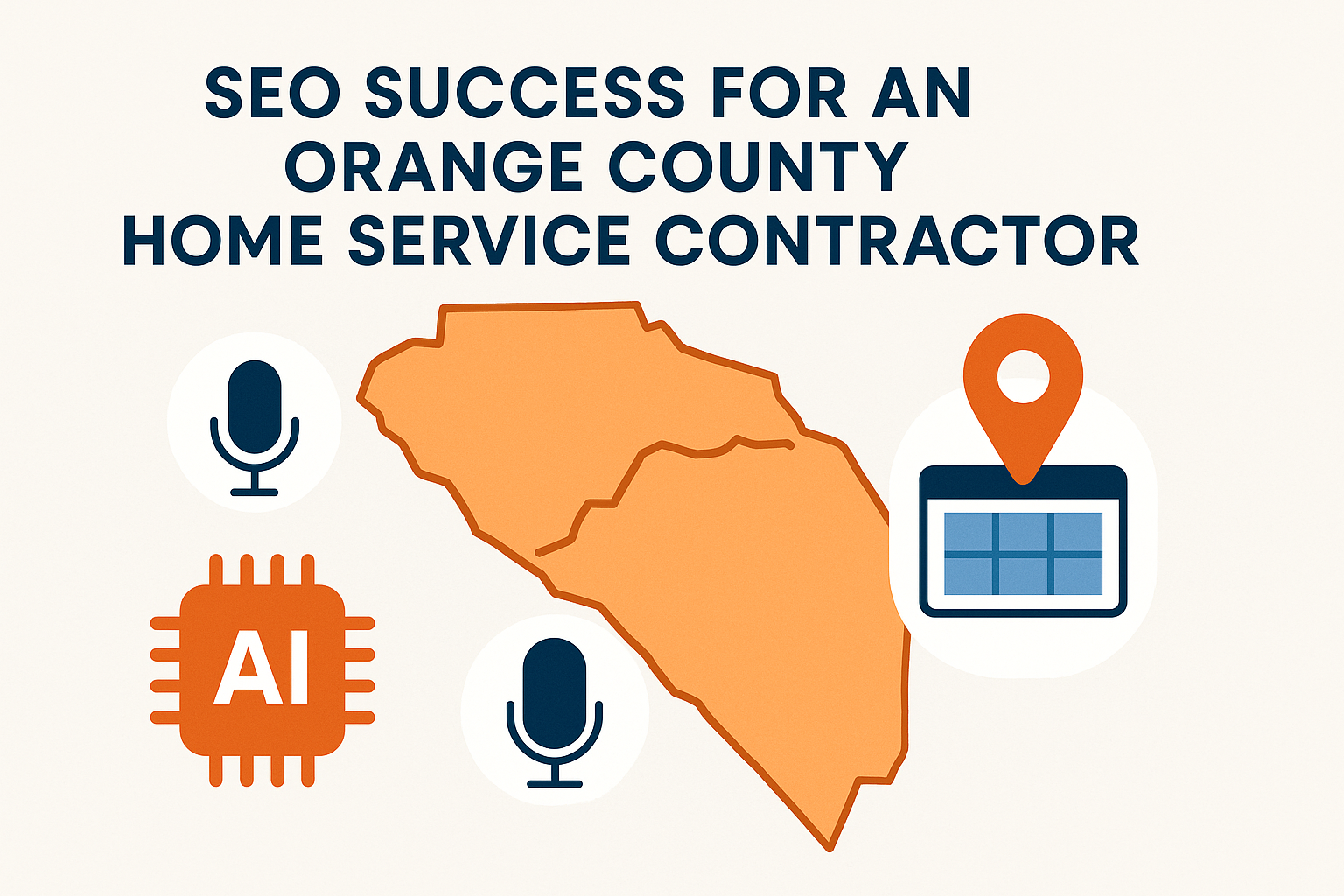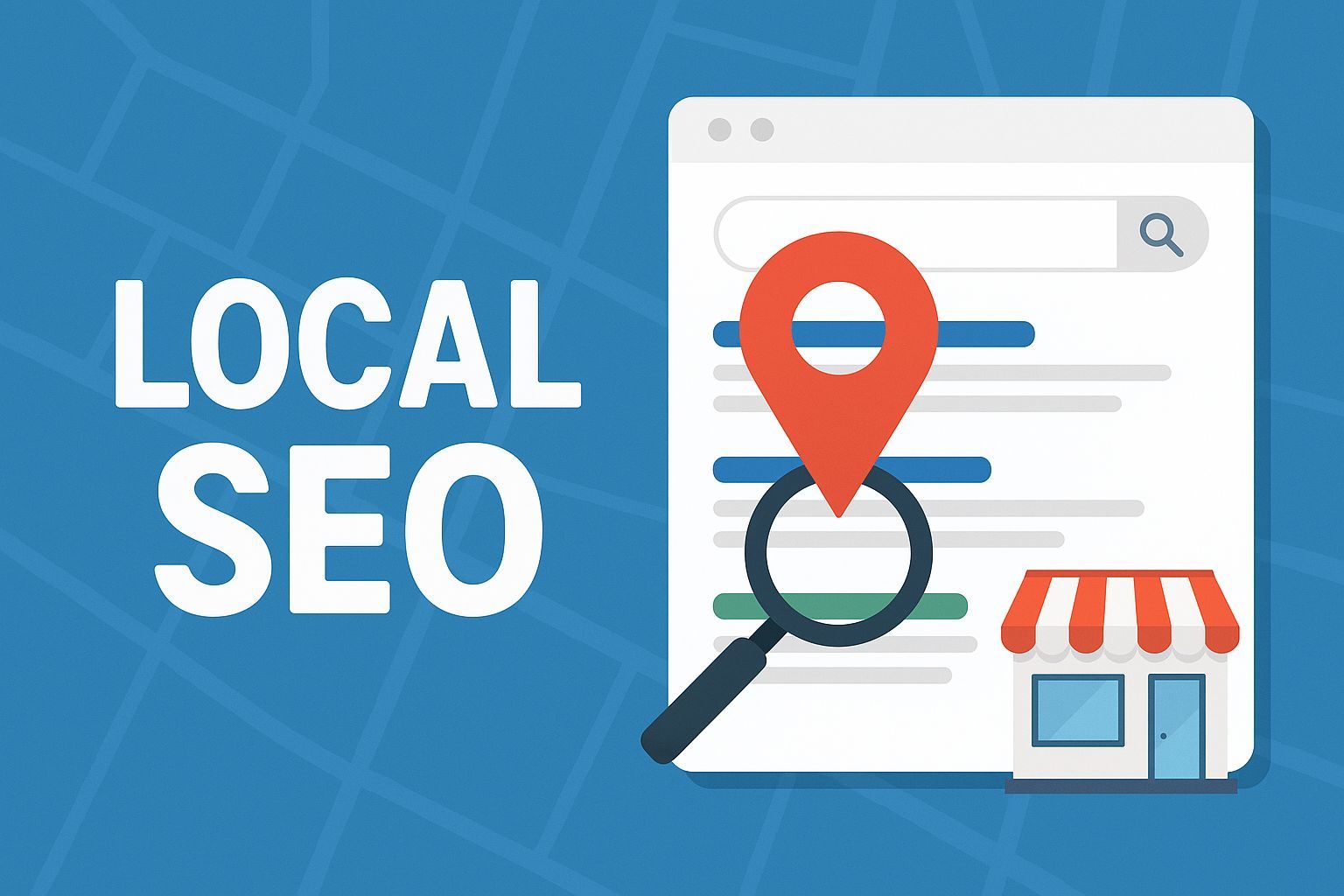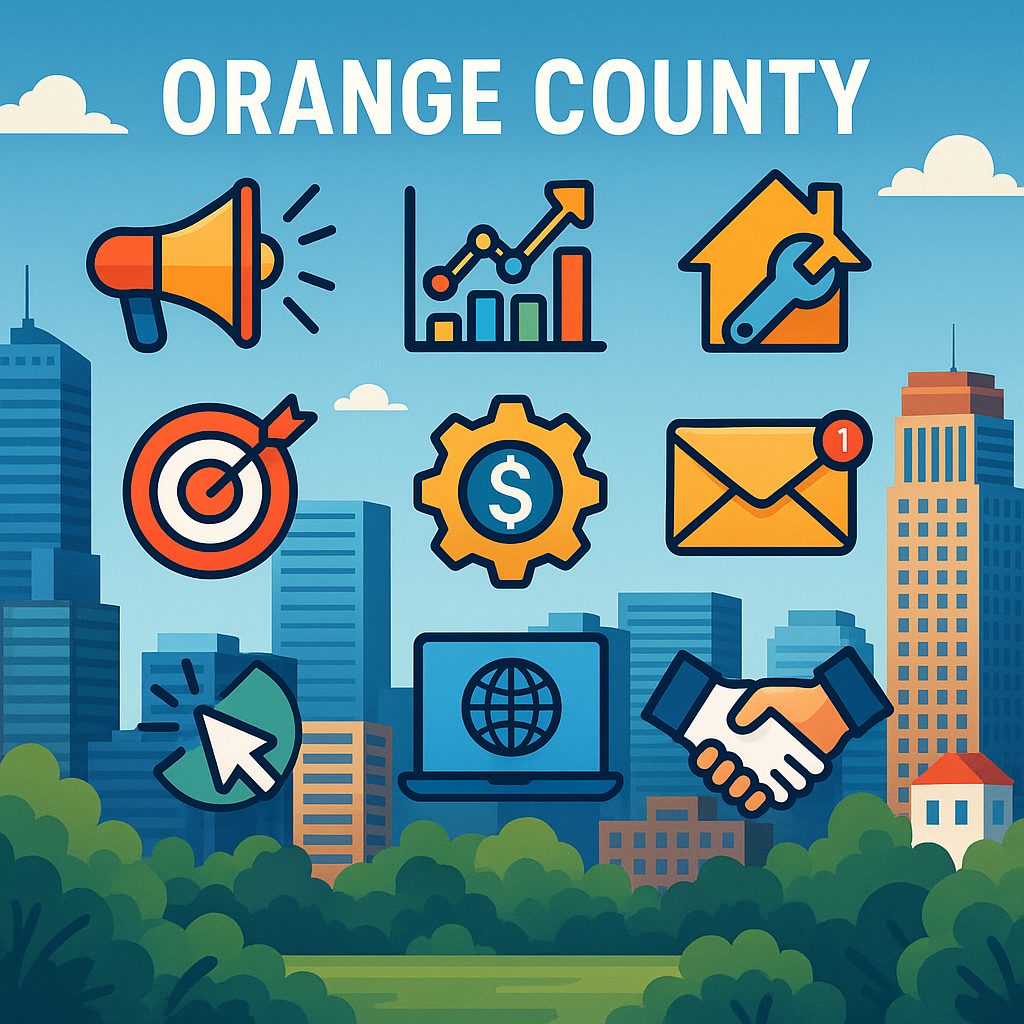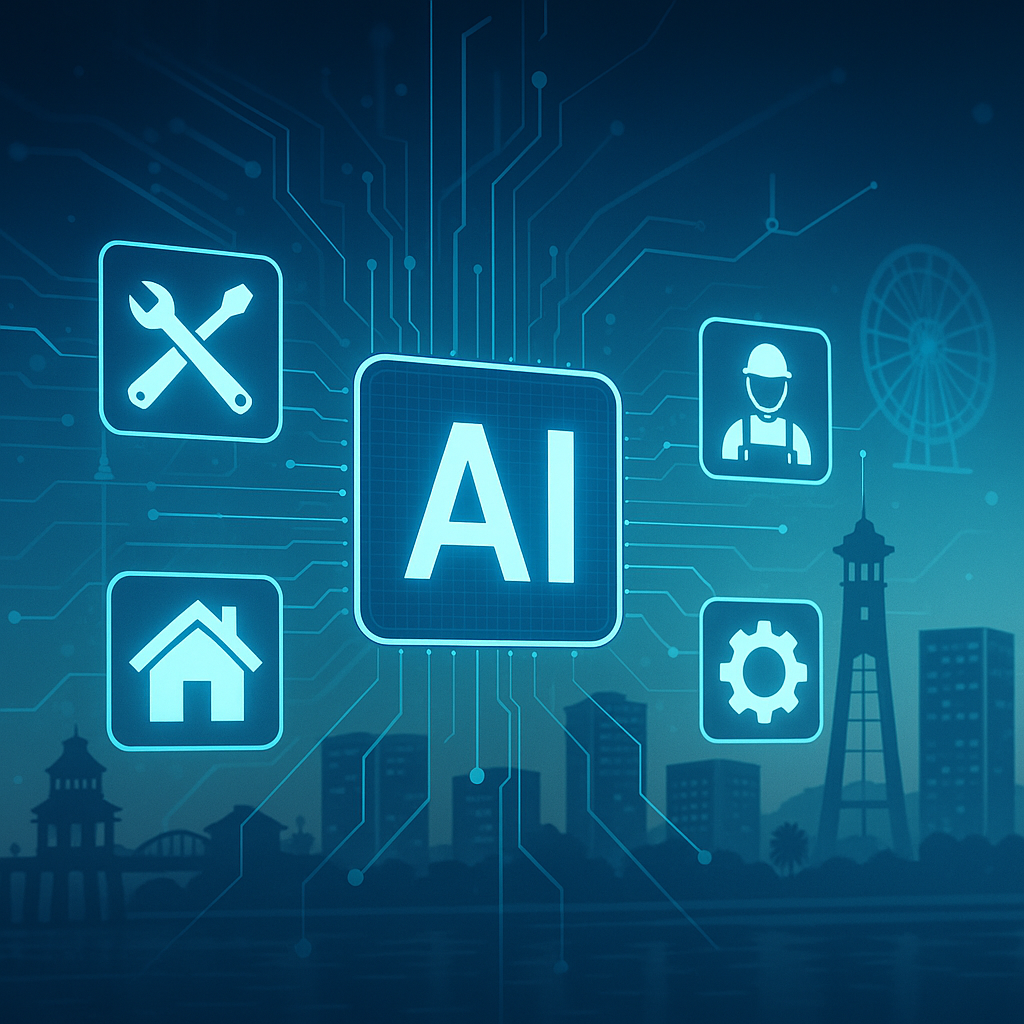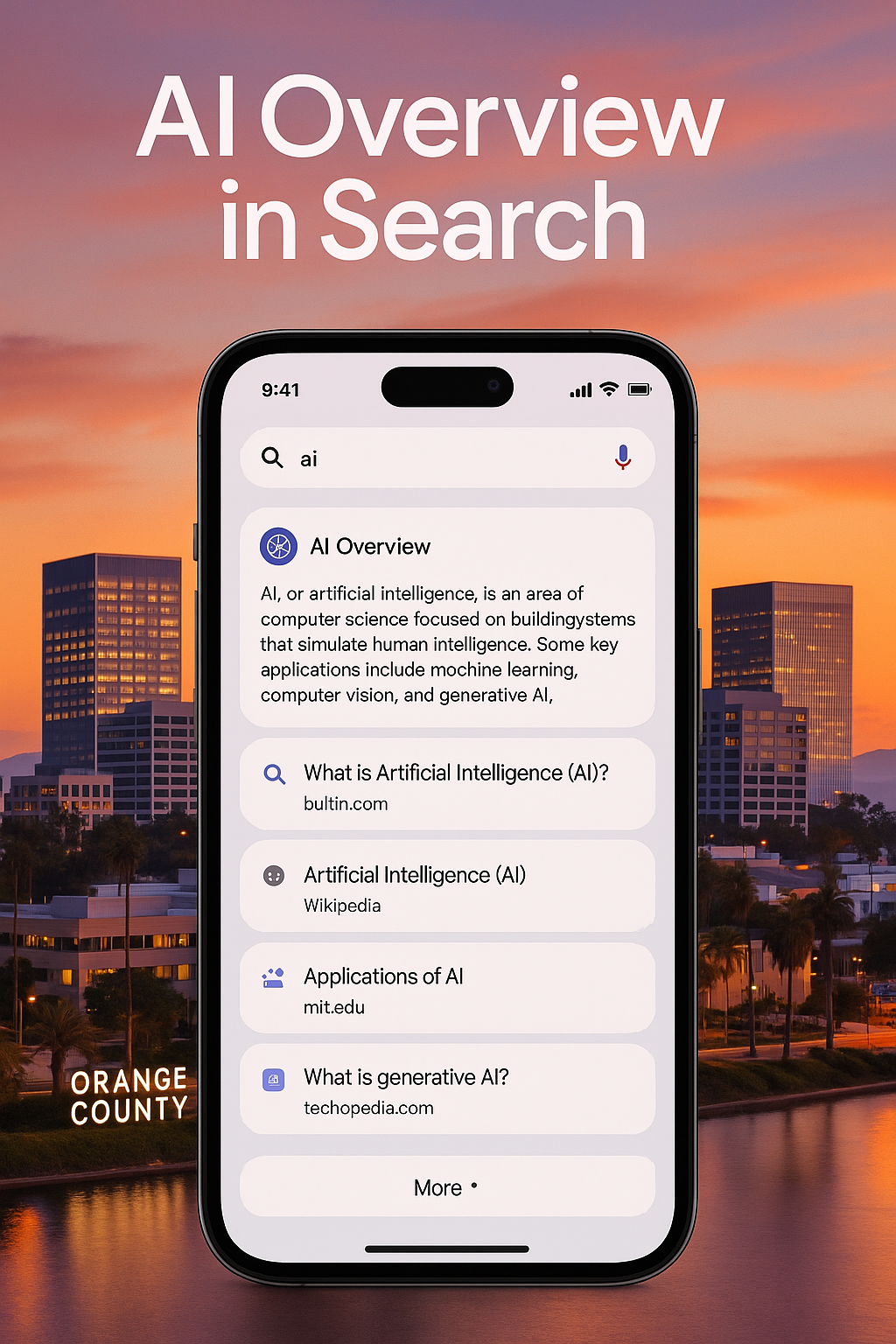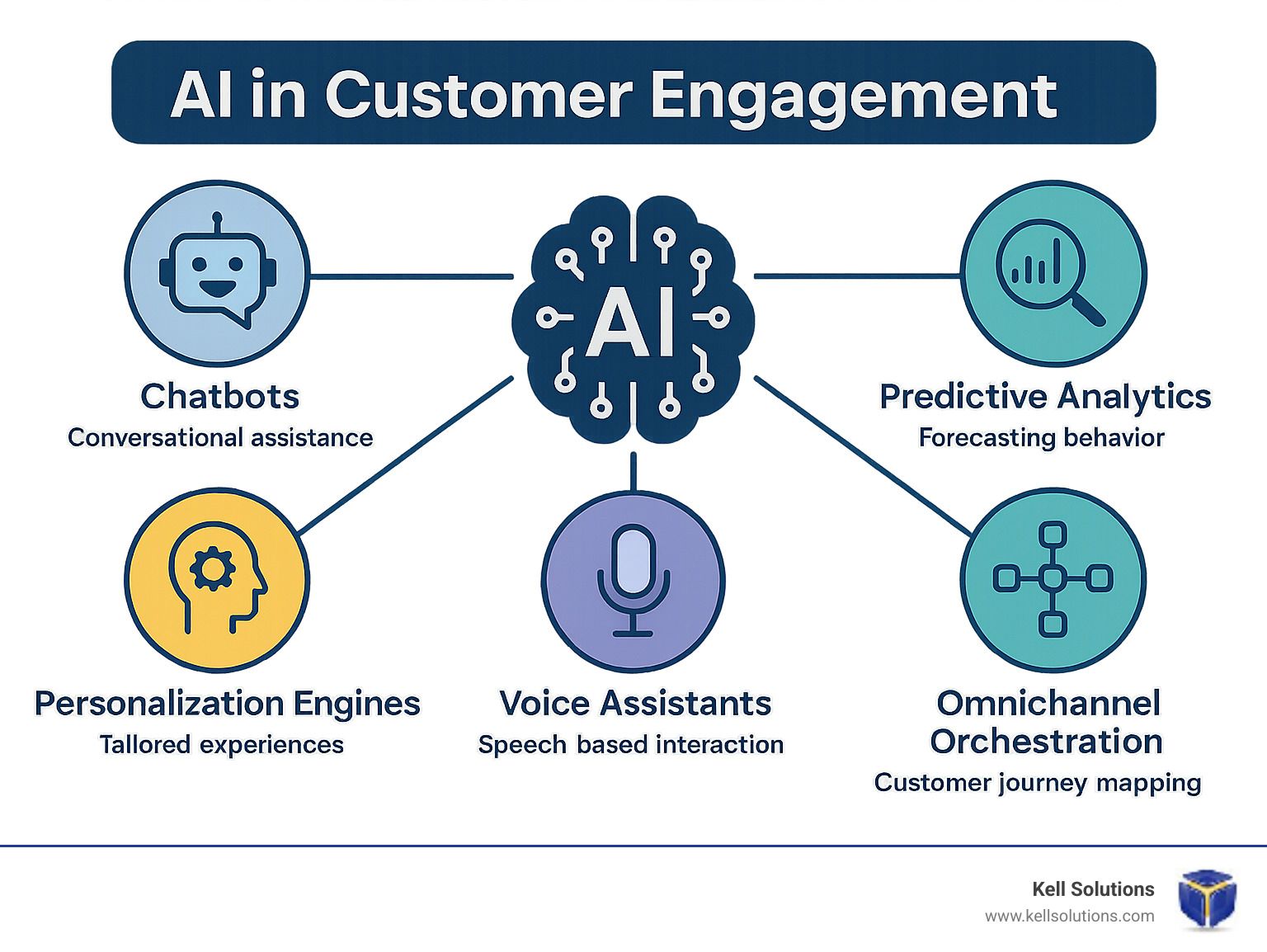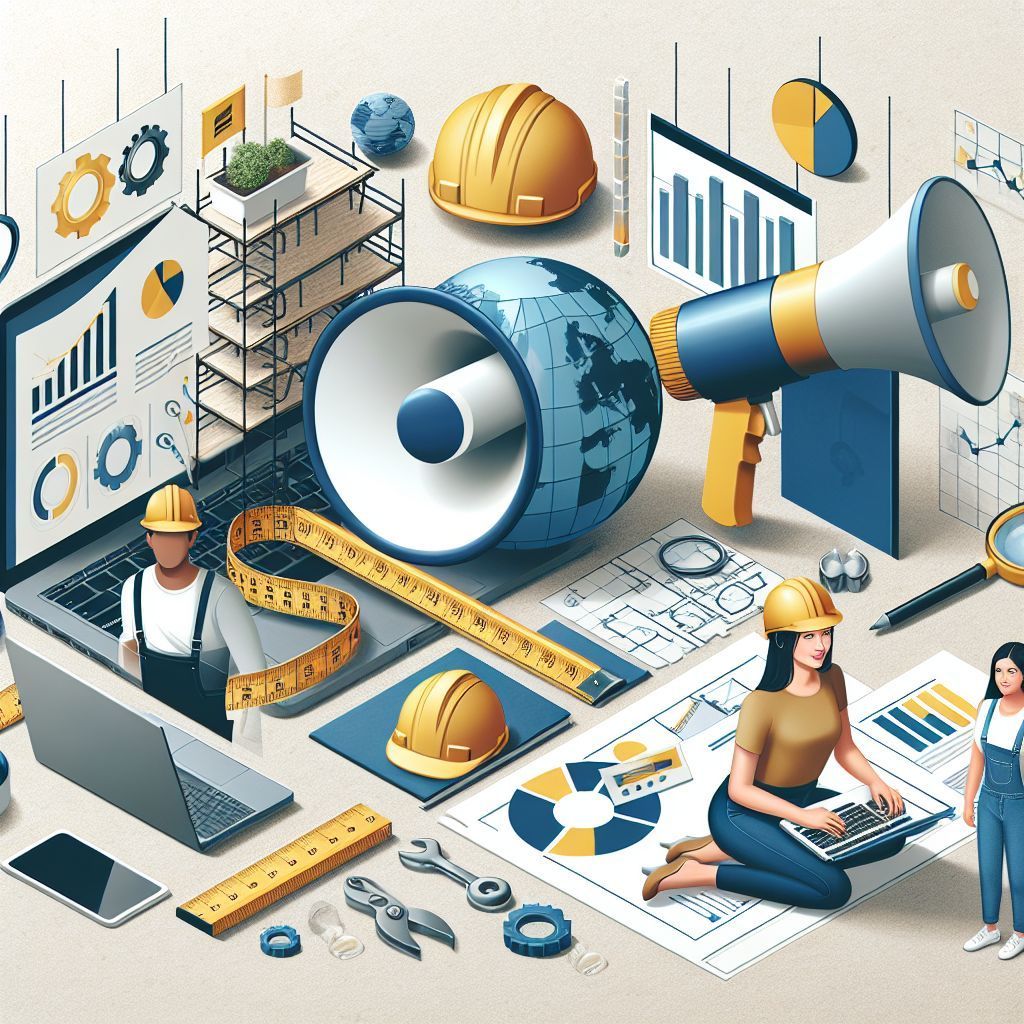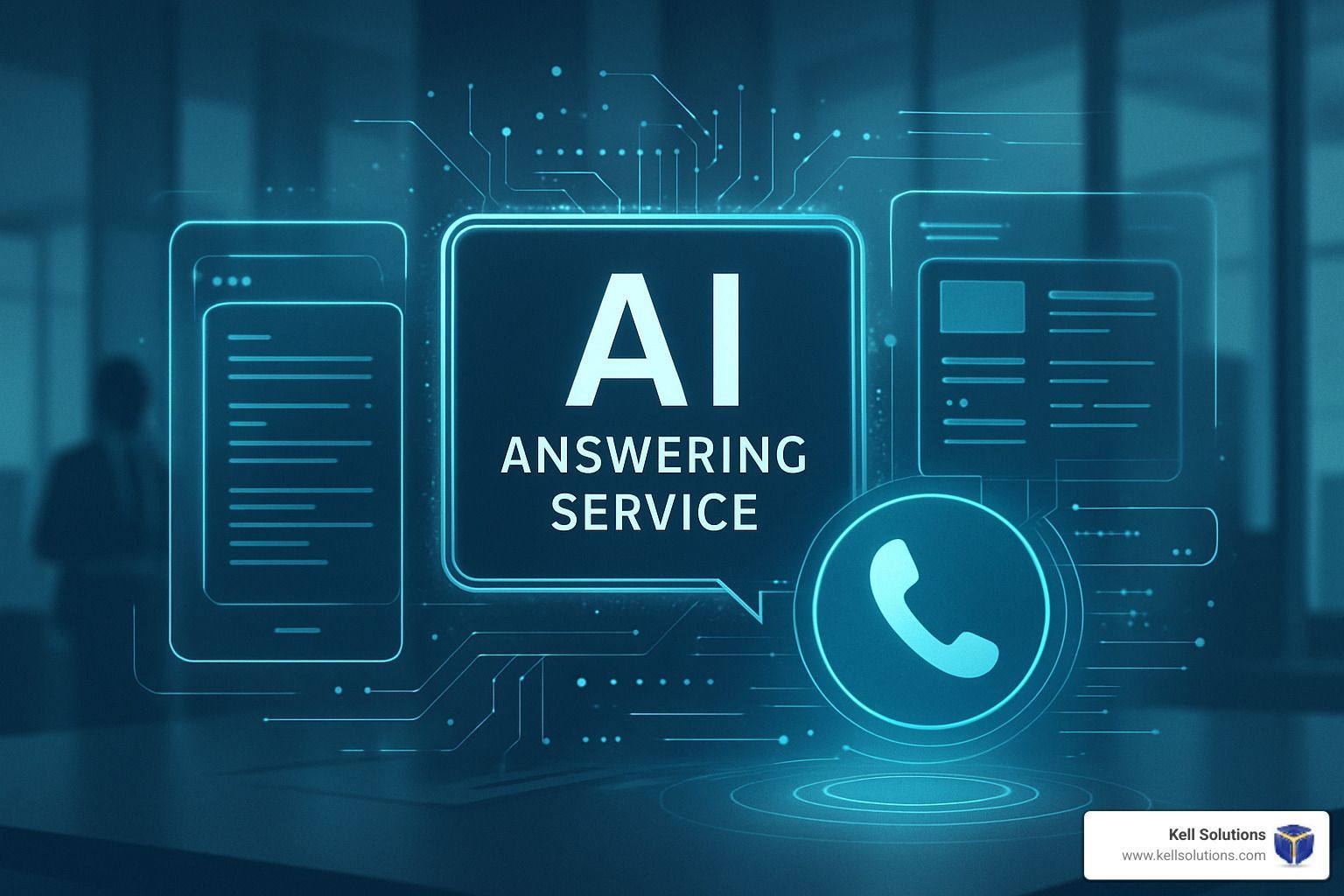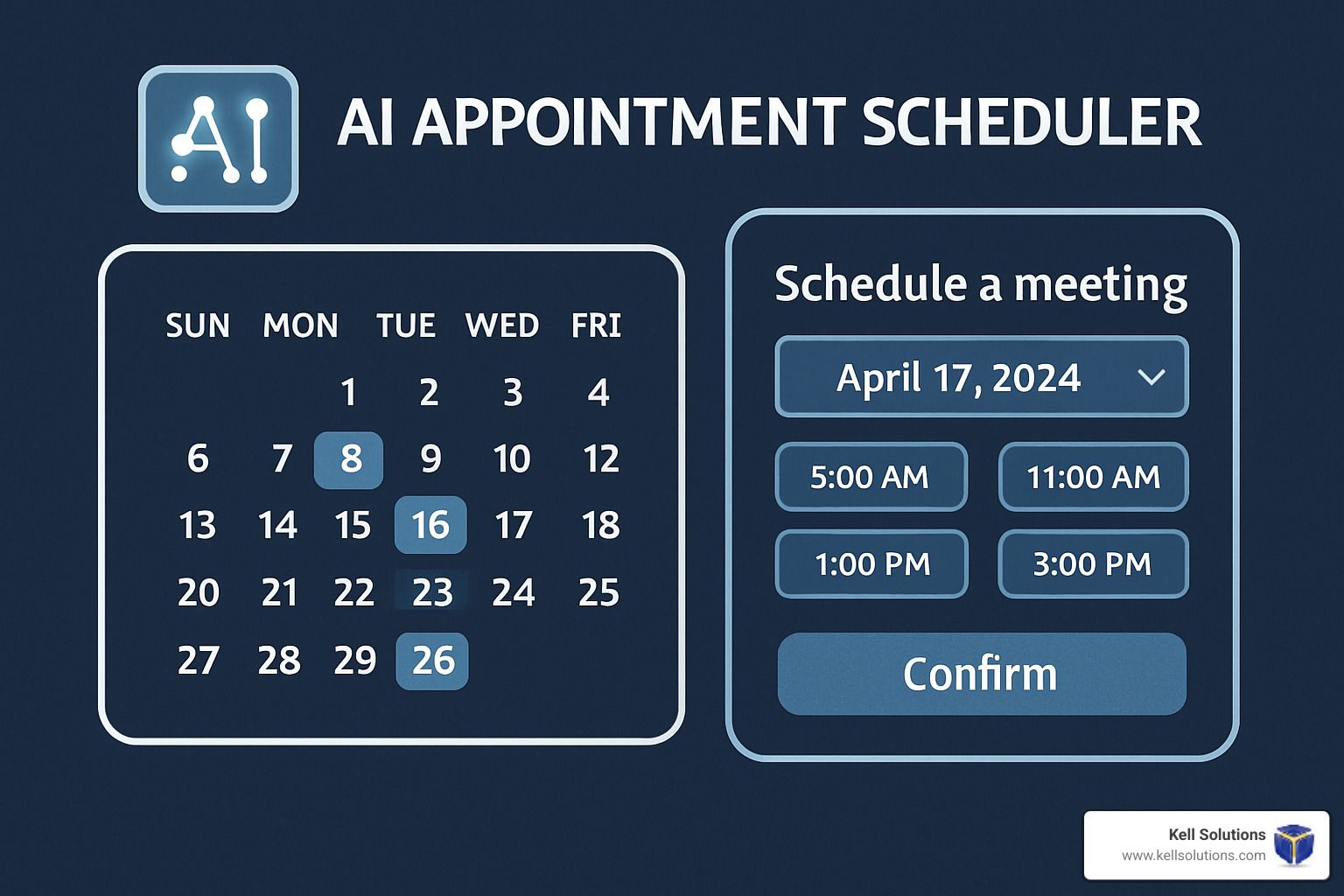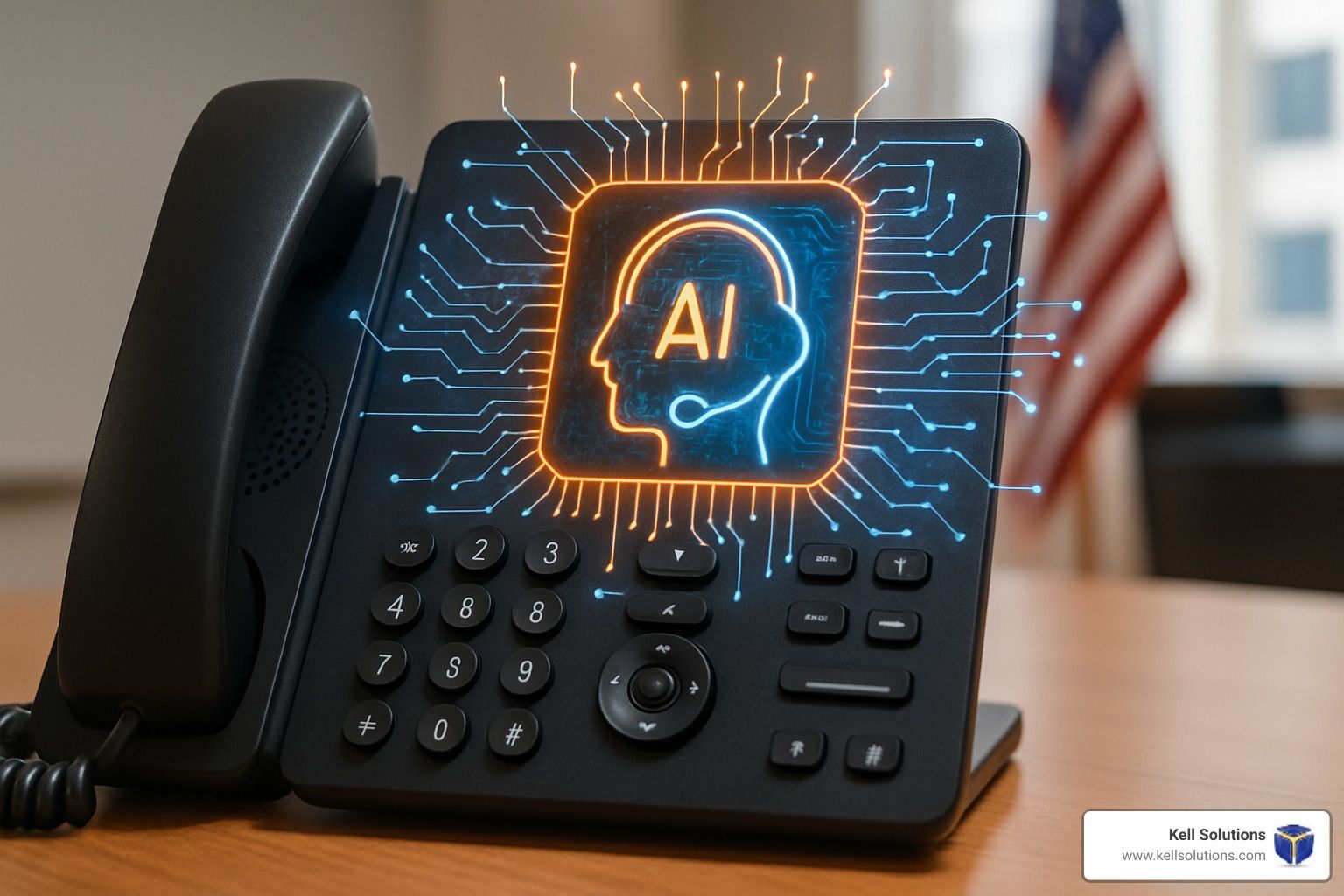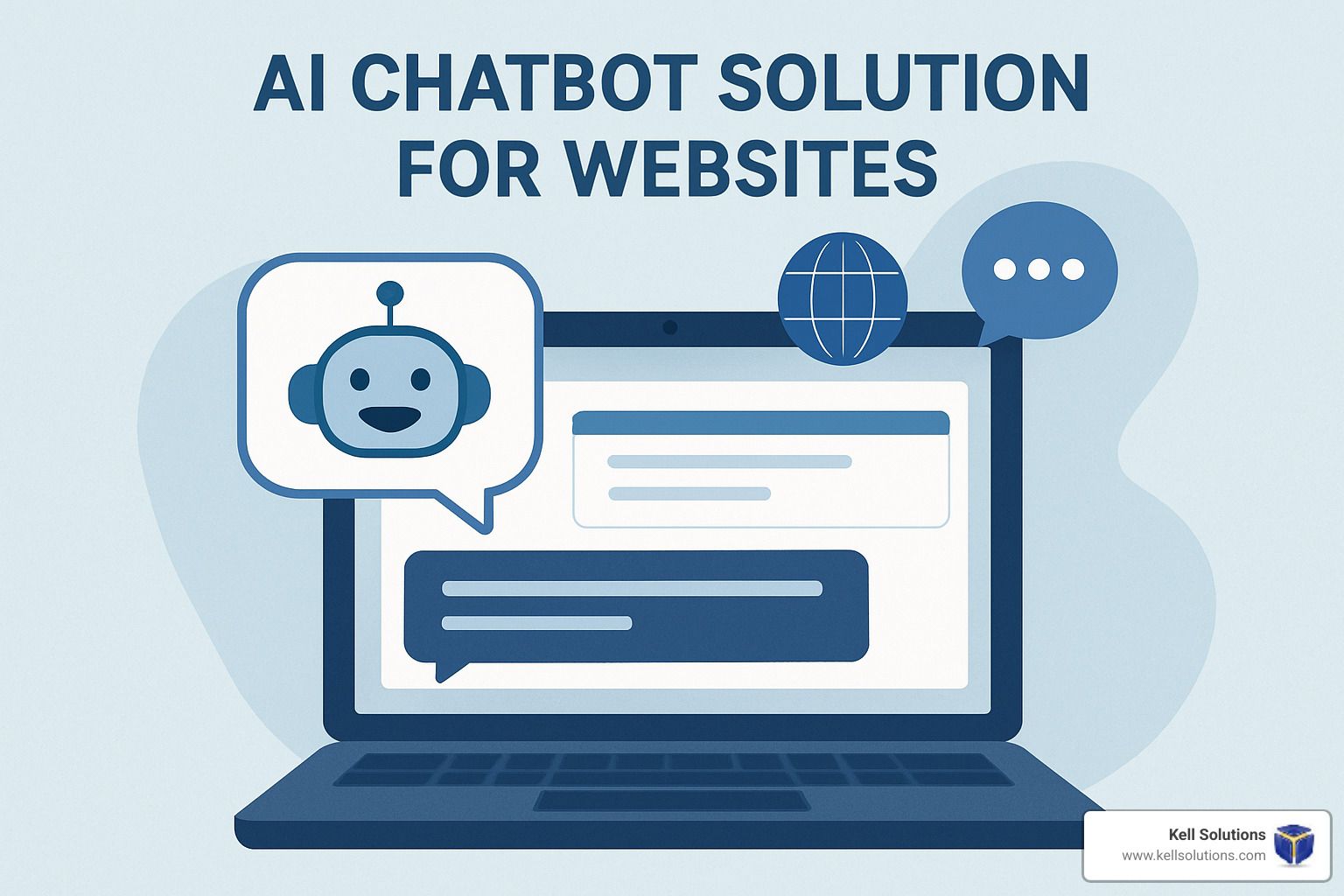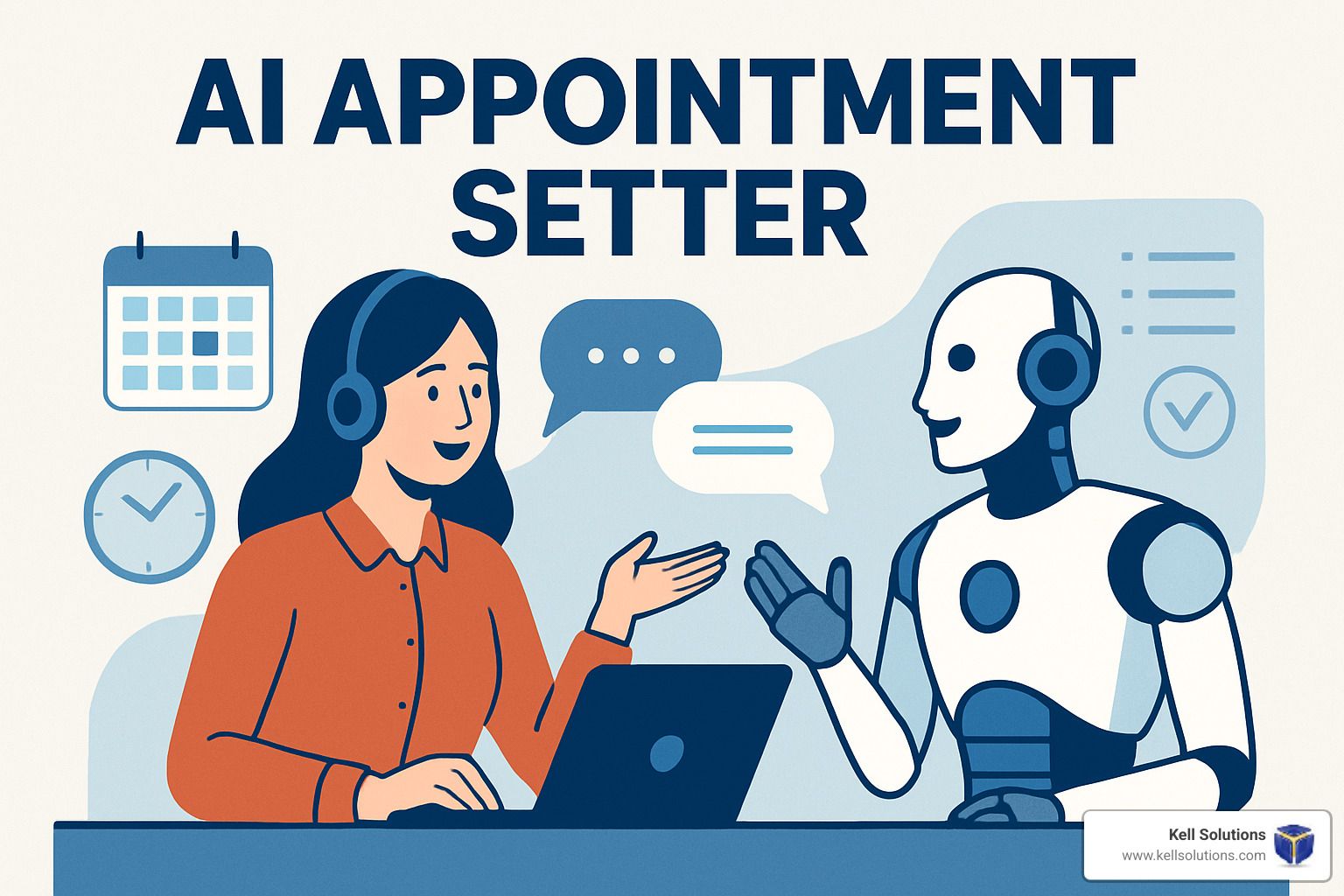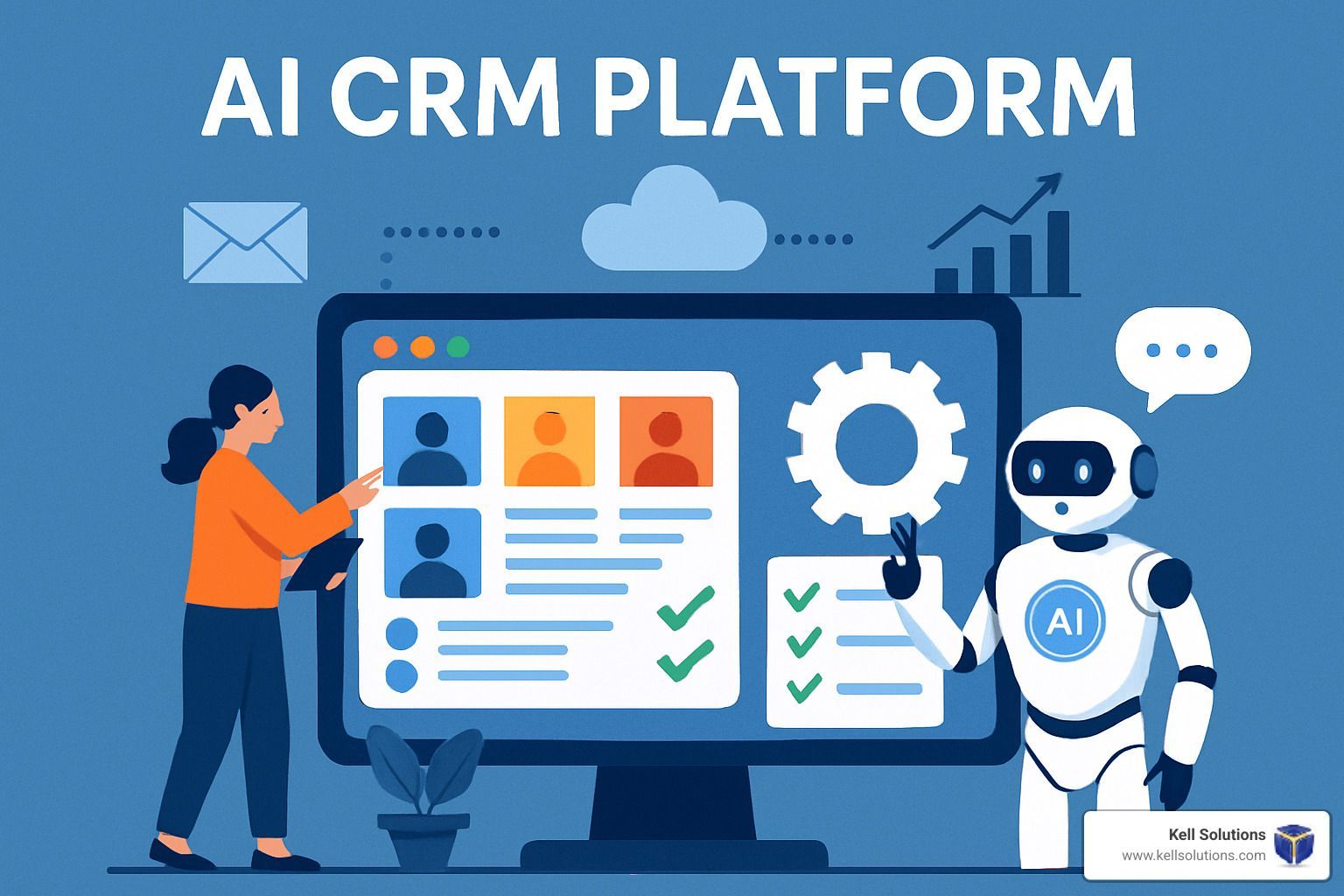Best 2025 AI Customer Service Enhancements & Innovations
How Next-Gen AI is Transforming Support, Automation, and Customer Experience in 2025

Article-at-a-Glance
- By 2026, AI customer service systems will resolve 89% of issues before customers even recognize them as problems, transforming support from reactive to proactive.
- Multimodal AI agents combining voice, video, and AR capabilities will create seamless omnichannel experiences, increasing first-contact resolution by up to 92%.
- Organizations implementing advanced AI customer service solutions are projected to see a 30% reduction in operational costs while simultaneously improving satisfaction metrics.
- OrchestratorX platform demonstrates how agentic AI can transform customer service operations through autonomous decision-making and predictive resolution.
- Companies that delay AI adoption until 2026 risk competitive obsolescence, as Gartner predicts 70% of complex service workflows will be handled by agentic AI by that year.
The customer service landscape is undergoing a paradigm shift that will fundamentally transform how businesses interact with their customers by 2026. No longer will support teams simply respond to problems—they'll resolve issues before customers even recognize them as concerns. This revolutionary approach is powered by next-generation AI systems that combine predictive analytics, autonomous decision-making, and multimodal interaction capabilities.
How AI Will Revolutionize Customer Service in 2025
The future of customer service isn't about incremental improvements—it's about complete transformation. By 2026, according to Gartner predictions, agentic AI will handle 70% of complex service workflows, creating an environment where machines don't just assist human agents but operate as autonomous support entities. This represents a fundamental shift from reactive service (responding to customer-initiated requests) to proactive service (anticipating and resolving issues before they surface). Organizations implementing these technologies aren't just improving efficiency—they're redefining what customer service means in the digital age.
VoiceGenie AI stands at the forefront of this revolution, developing systems that blend predictive capabilities with autonomous resolution to transform customer experience. Their platform demonstrates how AI can transcend traditional support limitations, creating experiences that feel personalized yet operate at unprecedented scale and efficiency. As businesses prepare for 2025's customer service landscape, understanding these emerging capabilities becomes critical for maintaining competitive advantage.
5 Game-Changing AI Customer Service Technologies for 2026
The next generation of customer service will be defined by five transformative technologies that collectively represent a quantum leap beyond today's capabilities. These innovations don't merely enhance existing processes—they fundamentally reinvent them, creating service experiences that would have seemed impossible just a few years ago. From systems that resolve problems before they occur to AI that understands emotional nuance, these technologies will separate market leaders from followers in the coming years.
Predictive Support Systems That Solve Problems Before They Happen
The most revolutionary aspect of 2026's customer service landscape will be the shift from reactive to proactive support. Advanced AI systems will continuously monitor product usage patterns, system performance metrics, and even subtle indicators of potential issues. By analyzing vast data streams in real-time, these systems can identify problems in their earliest stages—often before customers experience any noticeable effects. This predictive capability means many issues will be resolved through automatic updates, configuration changes, or proactive customer outreach before they impact the user experience.
In practical terms, imagine a software application that identifies unusual memory usage patterns indicating a potential crash, automatically applies a patch, and notifies the user that an issue was resolved—all without the customer ever experiencing a problem. These systems achieve 89% resolution rates for potential issues, dramatically reducing support volume while simultaneously improving customer satisfaction.
Multimodal AI Agents That Combine Voice, Video, and AR
By 2026, the distinctions between different service channels will largely disappear. Advanced AI agents will seamlessly transition between text, voice, video, and augmented reality modes within a single interaction, choosing the optimal modality for each phase of problem resolution. This capability eliminates the frustration of channel-switching and repetition that plagues current customer service experiences.
For example, a customer might begin with a text conversation about a malfunctioning appliance, transition to a voice call for more complex troubleshooting, then receive AR guidance overlaid on their smartphone camera view—showing exactly which components to check or buttons to press. The entire interaction feels continuous and natural, with the AI agent maintaining full context throughout. This multimodal approach achieves 92% first-contact resolution rates, dramatically higher than today's siloed channel approaches.
Autonomous Resolution Engines With 83% Issue Completion Rates
The agentic AI systems of 2026 won't just diagnose problems—they'll fix them. Equipped with decision-making authority and system access privileges, these autonomous resolution engines will complete 83% of service requests from start to finish without human intervention. This represents a fundamental evolution beyond today's chatbots and virtual assistants, which primarily gather information before routing to human agents.
These systems leverage secure access to customer accounts, product interfaces, and backend systems to implement solutions directly. From processing refunds to reconfiguring software settings to dispatching replacement parts with optimized delivery routing, autonomous resolution engines will handle complete service workflows. The technology combines advanced authentication protocols, sophisticated decision trees, and learning algorithms that improve outcomes over time.
Emotion-Intelligent Systems That Detect Customer Sentiment
By 2025, AI customer service platforms will incorporate sophisticated emotion detection capabilities that analyze voice patterns, language choices, and even facial expressions (when video is available). These systems identify subtle indicators of frustration, confusion, or satisfaction that might escape human notice. This emotional intelligence allows for dynamic adjustment of communication style, escalation protocols, and resolution approaches in real-time.
When a system detects rising frustration, it might proactively offer an alternative solution path, provide additional reassurance, or seamlessly transfer to a human specialist with the exact skills needed for that particular situation. The emotional awareness creates service experiences that feel genuinely empathetic rather than mechanically efficient. Research indicates these systems reduce customer effort scores by 35% while simultaneously improving satisfaction ratings.
Self-Learning Networks That Continuously Improve Without Human Input
The most sophisticated AI service platforms of 2025 will leverage continuous learning algorithms that autonomously identify improvement opportunities and implement adjustments without requiring human programming. These systems analyze thousands of interactions daily, identifying successful resolution patterns and communication approaches that generate positive outcomes. They then incorporate these insights into their operational protocols automatically.
This self-optimization creates a flywheel effect where service quality improves exponentially over time. While traditional service systems plateau or degrade as product complexity increases, self-learning networks actually accelerate their improvement trajectory.
Organizations implementing these technologies report 37% higher year-over-year improvement rates in customer satisfaction metrics compared to those using conventional AI approaches.
Real Business Results: The ROI of Advanced AI Customer Service
The transformative potential of 2025's AI customer service technologies extends far beyond improved customer satisfaction.
Forward-thinking organizations implementing these systems are documenting substantial financial impacts across multiple business dimensions. From dramatic cost reductions to revenue enhancements, the business case for investment in advanced AI service capabilities has become increasingly compelling.
"The question is no longer whether to implement agentic AI, but how quickly organizations can transform their customer service operations to harness its revolutionary potential. Those who wait until 2026 to begin will find themselves years behind competitors who are building capability now."
40% Reduction in Operational Costs
Organizations implementing advanced AI customer service solutions are documenting average cost reductions of 40% compared to traditional support operations. This dramatic improvement stems from multiple factors working in concert. Predictive resolution capabilities eliminate substantial volumes of inbound contacts by addressing issues proactively. Autonomous resolution engines handle the majority of remaining interactions without human involvement. And when human agents are required, AI assistance tools dramatically reduce handling times and improve first-contact resolution rates.
Beyond direct labor savings, these systems reduce infrastructure costs by optimizing resource allocation and minimizing peak capacity requirements. The technology also eliminates many indirect expenses associated with poor customer experiences, including the costs of excessive escalations, repeat contacts, and customer churn.
92% First-Contact Resolution Improvement
Perhaps the most significant operational benefit comes from dramatic improvements in first-contact resolution rates. Advanced AI systems achieve 92% first-contact resolution—a transformative improvement over traditional service operations that typically hover between 50-70%. This improvement drives both cost reductions and customer satisfaction improvements simultaneously.
The enhanced resolution capabilities stem from several factors. Multimodal interaction capabilities ensure the optimal communication channel is always available. Autonomous access to systems allows direct implementation of solutions rather than providing instructions to customers. And comprehensive knowledge bases combined with contextual awareness ensure the AI has complete information about customer history, product configurations, and previous interactions.
63% Return on Investment Within Six Months
Financial analysis reveals that organizations implementing comprehensive AI service transformations achieve average ROI of 63% within the first six months of deployment. This rapid payback period stems from the combination of immediate operational savings and enhanced revenue generation. While cost reductions provide the most immediately measurable benefits, revenue enhancements often deliver even greater long-term value.
The revenue impacts manifest through multiple mechanisms. Improved customer experiences drive 28% higher retention rates and increased lifetime value. Service interactions become opportunities for personalized recommendations, generating 35% higher average order values. Perhaps most significantly, companies with advanced AI service capabilities report 22% higher new customer acquisition rates, as superior service experiences become powerful competitive differentiators in the marketplace.
How Leading Companies Are Implementing AI Customer Service
While the potential benefits of advanced AI customer service are compelling, successful implementation requires strategic approaches tailored to organizational realities. Leading companies aren't simply purchasing technology—they're executing carefully structured transformation initiatives that address people, processes, and technology in coordinated fashion. Their experiences provide valuable implementation blueprints for organizations preparing for the 2025 customer service landscape.
OrchestratorX Platform Success Story
One illustrative case study comes from a Fortune 500 manufacturing company that deployed a OrchestratorX platform across its global service operations. Prior to implementation, the company struggled with 74% first-contact resolution rates, 12-minute average handle times, and declining customer satisfaction scores. The transformation began with a 90-day pilot in their North American division, focused initially on technical support for their three highest-volume product lines.
The results proved transformative across every key metric. First-contact resolution rates increased to 91% within the first quarter. Average handle times decreased by 67%, while customer satisfaction scores improved by 28 percentage points. Perhaps most significantly, the predictive capabilities of the platform reduced inbound contact volume by 42% through proactive issue resolution. The success of the pilot led to global deployment across all product lines and service functions, with the company now reporting $37 million in annualized cost savings while simultaneously achieving their highest-ever customer satisfaction ratings.
The Strategic Deployment Framework for AI Integration
Successful AI customer service transformation requires a structured approach that addresses both technical and organizational dimensions. Leading organizations follow a four-phase implementation framework that maximizes benefits while minimizing disruption to ongoing operations. This strategic approach ensures that AI capabilities enhance rather than replace the human elements that remain essential for complex customer interactions.
Organizations achieving the greatest success begin with comprehensive current-state assessment before implementing technology. They map existing customer journeys, identify high-impact improvement opportunities, and establish clear success metrics. This preparation creates the foundation for targeted implementation that delivers early wins while building toward comprehensive transformation.
1. Audit Existing Customer Touchpoints
The transformation journey begins with a detailed audit of all customer service touchpoints, interaction types, and resolution processes. This assessment identifies pain points, inefficiencies, and opportunities for AI enhancement. The most successful implementations analyze both quantitative metrics (handle times, resolution rates, contact volumes) and qualitative factors (customer effort, emotional response, satisfaction drivers).
This audit should extend beyond traditional service channels to encompass the entire customer experience ecosystem. Organizations often discover that many service contacts result from friction points in other business processes—opportunities where predictive AI capabilities can eliminate problems before they generate service interactions. The comprehensive view enables truly transformative implementation rather than simple automation of existing processes.
2. Start With High-Volume, Low-Complexity Interactions
The implementation roadmap should prioritize high-volume, standardized interactions for initial AI deployment. These use cases provide the ideal starting point for several reasons. They deliver substantial immediate ROI through operational savings. They typically involve well-defined processes that AI can master quickly. And they free human agents to focus on more complex interactions requiring emotional intelligence and creative problem-solving.
Common starting points include account status inquiries, basic troubleshooting for common issues, order tracking, and information updates. As the AI system demonstrates success with these fundamental interactions, organizations can progressively expand its capabilities to handle increasingly complex scenarios. This phased approach builds organizational confidence while providing the AI system with the interaction data needed for continuous improvement.
3. Implement Rapid Testing and Refinement Cycles
Leading organizations implement AI customer service capabilities through iterative cycles rather than big-bang deployments. These rapid testing cycles typically last 2-4 weeks, with each iteration focusing on specific capability enhancements or use case expansions. The approach allows for continuous refinement based on real-world performance data rather than theoretical projections.
Each testing cycle should include both quantitative performance metrics and qualitative assessment through customer feedback.
Organizations achieving the greatest success maintain dual focus on efficiency improvements and experience enhancement, recognizing that these objectives reinforce rather than conflict with each other. The iterative approach also allows for progressive optimization of the human-AI collaboration model as both employees and customers adapt to new service paradigms.
4. Train Cross-Functional Teams on New AI Protocols
The human dimension remains critical even as AI capabilities advance. Organizations must develop new skills among customer service teams to maximize the potential of AI collaboration. This training extends beyond basic technical operation to encompass strategic capabilities like exception handling, emotional intelligence for complex situations, and oversight of AI decision-making.
The most successful implementations create cross-functional teams that bring together customer service expertise, technical knowledge, and business process understanding. These integrated teams can identify optimization opportunities that might be missed by narrower functional perspectives. The approach also helps overcome organizational resistance by demonstrating how AI enhances rather than threatens human roles.
Customer Experience Transformation Through AI
Beyond operational improvements, the most significant impact of 2025's AI customer service innovations will be fundamental transformation of customer experience. Leading organizations are creating service experiences that feel simultaneously more personalized and more effortless than traditional approaches. This transformation extends beyond simple problem resolution to create meaningful connections that drive loyalty and advocacy.
From Reactive to Proactive: The End of Customer-Initiated Support
The most profound experience shift comes from the transition from reactive to proactive service models. In traditional service paradigms, the customer bears responsibility for identifying problems, initiating contact, explaining issues, and often implementing solutions based on agent guidance. This approach places significant cognitive and emotional burden on customers already experiencing frustration with product or service failures.
The predictive capabilities of advanced AI systems invert this dynamic completely. By 2027, up to 83% of potential service issues will be identified and resolved without any customer effort. When issues can't be resolved automatically, customers receive proactive notifications with specific resolution options rather than discovering problems themselves. This shift dramatically reduces customer effort while creating perceptions of organizational competence and care.
Personalization at Scale: Beyond Basic Recommendation Engines
The AI systems of 2025 will deliver truly personalized service experiences that adapt to individual preferences, history, and context. This personalization extends far beyond today's basic recommendation engines to encompass communication style, resolution approach, and even emotional tone. The technology creates experiences that feel individually crafted despite operating at massive scale.
Advanced ai personalization manifests in multiple dimensions. Communication adapts to customer preferences for technical detail versus simplified explanation. Resolution approaches prioritize factors most important to specific customers—whether speed, thoroughness, or cost. And even the personality expressed by AI agents can shift to match customer interaction styles. These capabilities create service experiences that feel genuinely human despite their technology underpinnings.
Frictionless Modality Switching for Seamless Customer Journeys
Perhaps the most visible experience enhancement comes from the elimination of channel boundaries that fragment current service experiences. The multimodal capabilities of 2025's AI systems allow seamless transitions between text, voice, video, and augmented reality within single interactions. This continuity eliminates the need for customers to repeat information or restart processes when switching between channels.
The experience implications extend beyond simple convenience. When customers can instantly shift to the most appropriate communication mode for each situation, resolution becomes dramatically more efficient. Complex technical issues that might require dozens of text messages can be resolved in moments through visual guidance. And customers can choose their preferred interaction mode based on their current context and preferences rather than organizational limitations.
Preparing Your Business for the 2026 AI Customer Service Landscape
While 2026 may seem distant, organizations must begin preparation now to capitalize on these transformative technologies. The implementation timeline for advanced AI capabilities typically spans 12-24 months for comprehensive deployment. Companies delaying preparation until 2024 or 2025 will find themselves at significant competitive disadvantage as customer expectations rapidly evolve.
Essential Infrastructure Requirements
The foundation for advanced AI customer service capabilities begins with robust technical infrastructure. Organizations must establish unified data environments that eliminate the silos preventing comprehensive customer understanding. This infrastructure must support real-time data processing at scale, with latency measured in milliseconds rather than seconds or minutes. The technical architecture should incorporate both cloud capabilities for scalability and edge computing for time-sensitive processing.
Beyond data infrastructure, organizations need integration frameworks that connect AI systems with operational platforms. These connections enable autonomous resolution by providing secure access to transaction systems, product interfaces, and fulfillment processes. The integration architecture must balance security requirements with the accessibility needed for AI decision-making and implementation.
Organizations should conduct comprehensive infrastructure assessments to identify gaps between current capabilities and 2025 requirements. Many companies discover that infrastructure transformation represents the longest lead-time component of their AI implementation roadmap, making it a critical early focus area.
Data Collection and Management Strategies
Advanced AI capabilities require comprehensive, high-quality data across multiple dimensions. Organizations must develop systematic approaches to collect, structure, and maintain the diverse data sets that power predictive and personalized service experiences. This data strategy should encompass customer interaction history, product performance metrics, environmental factors, and even emotional response indicators.
Beyond collection, organizations need sophisticated data governance frameworks that ensure quality, consistency, and compliance. These frameworks must balance accessibility for AI training and operation with protection of sensitive information. Leading companies establish dedicated data management teams with responsibility for maintaining the "fuel" that powers their AI service capabilities.
Compliance and Ethical Considerations
As AI systems gain greater autonomy in customer service operations, organizations face complex compliance and ethical considerations. Regulatory frameworks around AI decision-making are evolving rapidly, with significant variations across global jurisdictions. Companies must establish governance structures that monitor these evolving requirements and ensure continuous compliance across all markets where they operate.
"The ethical deployment of autonomous AI requires balancing technological capabilities with human values. Organizations must establish clear guidelines for transparency, bias prevention, and appropriate boundaries for AI decision-making authority."
Beyond regulatory compliance, organizations must address ethical dimensions of AI deployment. Transparency becomes particularly important as AI systems gain decision-making authority. Customers should understand when they're interacting with AI versus human agents, and the basis for AI recommendations or decisions should be explainable when appropriate. Organizations should establish ethics committees with diverse perspectives to guide these complex determinations.
Privacy considerations require particular attention as AI systems leverage increasingly detailed customer data. Organizations must implement privacy-by-design principles that limit data collection to necessary elements, provide appropriate anonymization, and give customers meaningful control over their information. These privacy frameworks should extend beyond minimum regulatory requirements to establish trust as a competitive differentiator.
The ethical dimensions extend to workforce impacts as well. Organizations implementing advanced AI capabilities should develop comprehensive strategies for role evolution, skill development, and potentially workforce transitions. Leading companies view these considerations not merely as risk management but as opportunities to enhance both customer and employee experiences simultaneously.
Staff Training and Role Evolution
As AI systems assume responsibility for routine interactions, human service roles will evolve toward higher-value activities requiring emotional intelligence, complex problem-solving, and judgment. Organizations must proactively define these evolved roles and develop training programs that help team members build the necessary capabilities. This transformation represents perhaps the most significant change management challenge in the implementation journey.
Successful organizations approach this evolution as a partnership between human and artificial intelligence rather than a replacement dynamic. They create blended service models where AI handles routine processes while augmenting human capabilities for complex scenarios. This approach maximizes both operational efficiency and customer experience quality while creating more rewarding career paths for service professionals.
The Future Is Here: Why You Can't Wait Until 2026
While this article focuses on the 2025 customer service landscape, the reality is that these transformations are already underway. Organizations implementing advanced AI capabilities today are establishing competitive advantages that will prove increasingly difficult to overcome. The development and implementation timeline for sophisticated AI service ecosystems typically spans 12-24 months, meaning companies that wait until 2026 to begin will find themselves years behind market leaders.
The competitive implications extend beyond operational metrics to fundamental customer expectations. As leading organizations deliver proactive, personalized, and effortless experiences, customer tolerance for traditional service approaches will rapidly diminish. Companies maintaining reactive service models will find themselves at significant disadvantage in both customer acquisition and retention. The question isn't whether to implement advanced AI customer service capabilities, but how quickly organizations can execute the transformation. VoiceGenie AI provides the expertise, technology, and implementation framework to accelerate this journey, helping organizations build the customer service capabilities that will define market leadership in 2025 and beyond.
Frequently Asked Questions
As organizations evaluate advanced AI customer service capabilities, several questions consistently emerge. These inquiries reflect both strategic concerns about transformation direction and tactical considerations regarding implementation approaches. The following responses address the most common questions based on actual implementation experiences across multiple industries and organization types.
Many organizations approach AI implementation with unrealistic expectations about either capabilities or implementation requirements. This FAQ section aims to provide grounded, experience-based responses that help companies develop realistic transformation roadmaps. While specific circumstances vary by organization, these general guidelines provide valuable starting points for planning and evaluation processes.
It's worth noting that the answers provided represent current best practices based on existing implementations. As AI technology continues its rapid evolution, some specifics may change, particularly around technical requirements and capability boundaries. Organizations should partner with experienced implementation providers who maintain current knowledge of the rapidly evolving AI landscape.
Most importantly, companies should recognize that successful implementation requires ongoing adaptation rather than one-time deployment. The organizations achieving greatest success approach AI implementation as a continuous journey of capability enhancement rather than a discrete project with fixed endpoints.
How much does implementing advanced AI customer service typically cost?
Implementation costs vary significantly based on organizational size, complexity, and existing infrastructure. For mid-sized enterprises, initial investments typically range from $500,000 to $2 million for comprehensive deployment, with ongoing operational costs of $250,000 to $750,000 annually. However, these investments typically generate ROI of 40-60% within the first year through operational savings and revenue enhancements. Organizations can manage investment requirements through phased implementation approaches that prioritize highest-value use cases for initial deployment, using early returns to fund subsequent expansion.
Will AI customer service systems replace human agents completely?
No, but the nature of human service roles will fundamentally change. By 2025, AI systems will handle 80-90% of routine service interactions autonomously, but human agents will remain essential for complex problem-solving, emotional support, and exception handling. The most successful implementations create blended service models where AI handles volume while human agents focus on high-value, complex interactions. This evolution typically shifts workforce composition toward higher-skilled roles rather than eliminating service positions entirely. Organizations should approach implementation as role transformation rather than replacement, with emphasis on developing new capabilities among existing team members.
What types of businesses benefit most from AI customer service in 2025?
While organizations across all sectors will leverage AI customer service capabilities by 2025, several business types stand to gain particular advantage. Companies with high transaction volumes, complex products requiring frequent support, subscription-based business models, and regulated industries with documentation requirements typically realize the greatest benefits. The technology delivers particular value when service quality directly impacts revenue retention, as with subscription services, or when operational costs represent significant expense factors.
Contrary to common assumptions, company size is not the primary determinant of benefit potential. Small and mid-sized organizations often achieve faster implementation and higher percentage improvements than larger enterprises due to greater agility and less complex legacy environments. The critical success factor is commitment to transformation rather than organizational scale or technical sophistication.
How does emotion detection technology actually work in AI systems?
Modern emotion detection combines multiple signal types to identify customer emotional states with remarkable accuracy. These systems analyze linguistic patterns (word choice, sentence structure, topic shifts), paralinguistic signals (tone, pitch, speaking rate, volume), and when available, visual cues (facial expressions, posture). The technology uses machine learning models trained on millions of interactions with validated emotional labels to identify patterns associated with specific emotional states, contributing to the transformation of the customer service landscape.
"Effective emotion recognition isn't about categorizing customers into simple emotional buckets—it's about detecting subtle shifts in sentiment that indicate changing needs or emerging issues during the interaction. The goal isn't labeling emotions but responding appropriately to them."
The most sophisticated systems detect not just basic emotions but complex emotional states like confusion, skepticism, or growing frustration. They also identify emotional transitions during interactions, allowing for dynamic adjustment of approach. Importantly, these systems don't simply categorize customers but provide guidance for appropriate responses to emotional signals—whether through AI adaptation or human escalation.
Privacy considerations remain important in emotion detection implementation. Leading organizations establish transparent policies about what signals are analyzed, how the information is used, and what emotional data is retained. They also provide opt-out mechanisms for customers who prefer not to have emotional aspects of their interactions analyzed.
What security measures protect customer data in AI service platforms?
Advanced AI customer service platforms implement multi-layered security architectures that protect data throughout its lifecycle. These protections begin with encryption for both data in transit and at rest, using military-grade protocols with regular key rotation. Access controls implement principle of least privilege, with dynamic permissions that adjust based on context and verified need. Continuous monitoring systems using behavioral analysis detect anomalous access patterns that might indicate compromise attempts.
Beyond technical protections, organizations implement governance frameworks that establish clear data handling policies, including data minimization principles that limit collection to necessary elements. Regular security audits by independent third parties verify both technical controls and governance practices. Leading implementations also incorporate privacy-by-design principles that build protection into core system architecture rather than adding it as an afterthought.
The most sophisticated implementations use advanced techniques like federated learning that allow AI improvement without centralizing sensitive data. These approaches enable continuous capability enhancement while minimizing security and privacy risks associated with data aggregation. The technology continues evolving rapidly, with zero-knowledge proofs and homomorphic encryption emerging as promising approaches for future implementations.


Orange County HVAC Google AI Overview Domination: 7 Proven Strategies to Capture Featured AI Results





